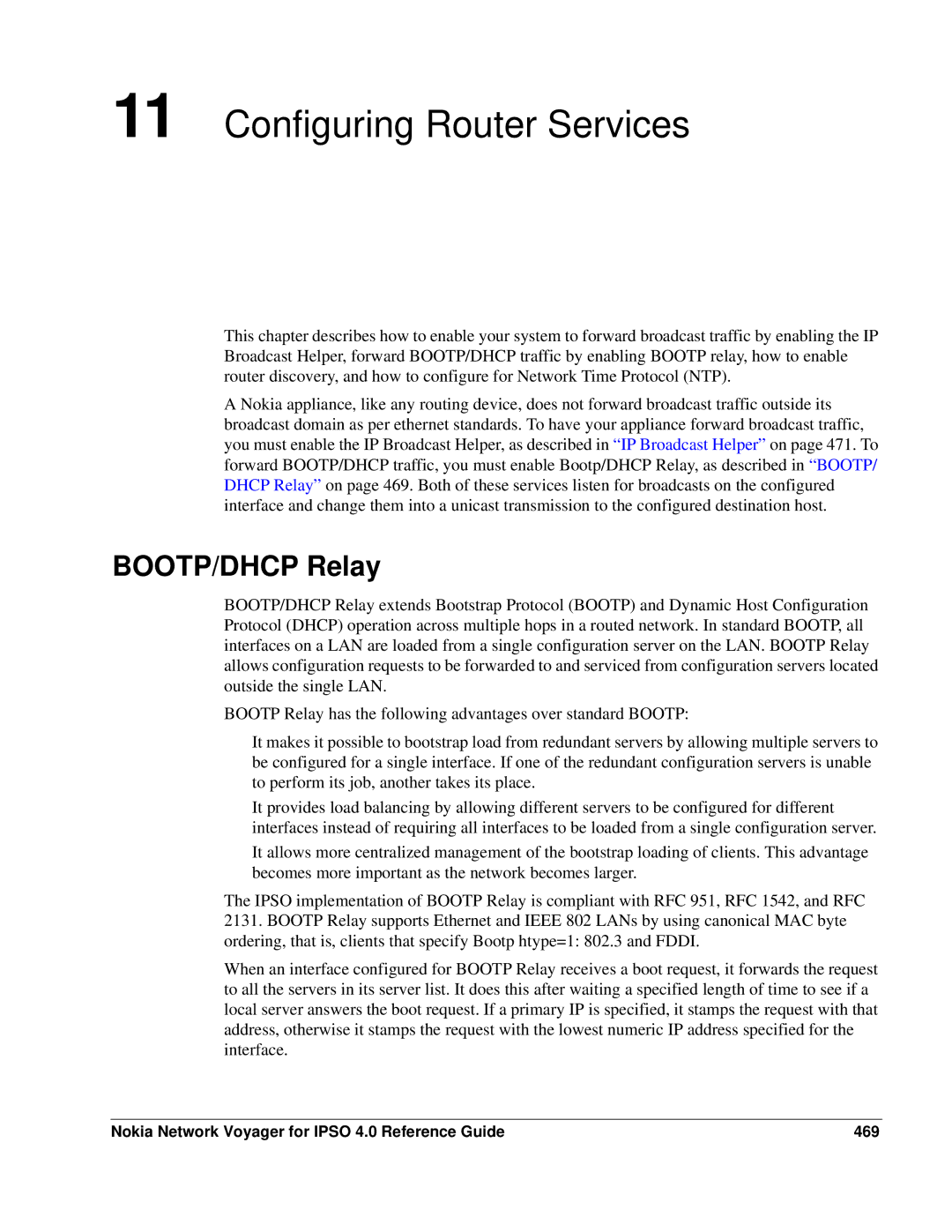11 Configuring Router Services
This chapter describes how to enable your system to forward broadcast traffic by enabling the IP Broadcast Helper, forward BOOTP/DHCP traffic by enabling BOOTP relay, how to enable router discovery, and how to configure for Network Time Protocol (NTP).
A Nokia appliance, like any routing device, does not forward broadcast traffic outside its broadcast domain as per ethernet standards. To have your appliance forward broadcast traffic, you must enable the IP Broadcast Helper, as described in “IP Broadcast Helper” on page 471. To forward BOOTP/DHCP traffic, you must enable Bootp/DHCP Relay, as described in “BOOTP/ DHCP Relay” on page 469. Both of these services listen for broadcasts on the configured interface and change them into a unicast transmission to the configured destination host.
BOOTP/DHCP Relay
BOOTP/DHCP Relay extends Bootstrap Protocol (BOOTP) and Dynamic Host Configuration Protocol (DHCP) operation across multiple hops in a routed network. In standard BOOTP, all interfaces on a LAN are loaded from a single configuration server on the LAN. BOOTP Relay allows configuration requests to be forwarded to and serviced from configuration servers located outside the single LAN.
BOOTP Relay has the following advantages over standard BOOTP:
It makes it possible to bootstrap load from redundant servers by allowing multiple servers to be configured for a single interface. If one of the redundant configuration servers is unable to perform its job, another takes its place.
It provides load balancing by allowing different servers to be configured for different interfaces instead of requiring all interfaces to be loaded from a single configuration server.
It allows more centralized management of the bootstrap loading of clients. This advantage becomes more important as the network becomes larger.
The IPSO implementation of BOOTP Relay is compliant with RFC 951, RFC 1542, and RFC 2131. BOOTP Relay supports Ethernet and IEEE 802 LANs by using canonical MAC byte ordering, that is, clients that specify Bootp htype=1: 802.3 and FDDI.
When an interface configured for BOOTP Relay receives a boot request, it forwards the request to all the servers in its server list. It does this after waiting a specified length of time to see if a local server answers the boot request. If a primary IP is specified, it stamps the request with that address, otherwise it stamps the request with the lowest numeric IP address specified for the interface.
Nokia Network Voyager for IPSO 4.0 Reference Guide | 469 |
